Burger-making machine replaces workers
San Francisco's Creator to serve up robot-prepared food
Advertisement
Read this article for free:
or
Already have an account? Log in here »
To continue reading, please subscribe:
Monthly Digital Subscription
$1 per week for 24 weeks*
- Enjoy unlimited reading on winnipegfreepress.com
- Read the E-Edition, our digital replica newspaper
- Access News Break, our award-winning app
- Play interactive puzzles
*Billed as $4.00 plus GST every four weeks. After 24 weeks, price increases to the regular rate of $19.00 plus GST every four weeks. Offer available to new and qualified returning subscribers only. Cancel any time.
Monthly Digital Subscription
$4.75/week*
- Enjoy unlimited reading on winnipegfreepress.com
- Read the E-Edition, our digital replica newspaper
- Access News Break, our award-winning app
- Play interactive puzzles
*Billed as $19 plus GST every four weeks. Cancel any time.
To continue reading, please subscribe:
Add Free Press access to your Brandon Sun subscription for only an additional
$1 for the first 4 weeks*
*Your next subscription payment will increase by $1.00 and you will be charged $16.99 plus GST for four weeks. After four weeks, your payment will increase to $23.99 plus GST every four weeks.
Read unlimited articles for free today:
or
Already have an account? Log in here »
Hey there, time traveller!
This article was published 25/06/2018 (2681 days ago), so information in it may no longer be current.
On Wednesday, the world’s first robot-crafted burger will roll off a conveyor belt in San Francisco and into the hands of the public.
You could call it the freshest burger on Earth.
The product, from Bay Area-based Creator, a culinary robotics company, is assembled and cooked in a machine that contains 20 computers, 350 sensors and 50 actuator mechanisms. It does everything from slicing and toasting the brioche bun to adding toppings (to order) and seasoning and cooking the patties, all in five minutes. The meat is ground to order — why it’s touted as so fresh — and sourced from premium ingredients. It emerges from the machine piled with tomatoes and lettuce, sprinkled with seasonings and drizzled with sauces, at which point it’s transferred by human hands to the customer. The price: US$6.
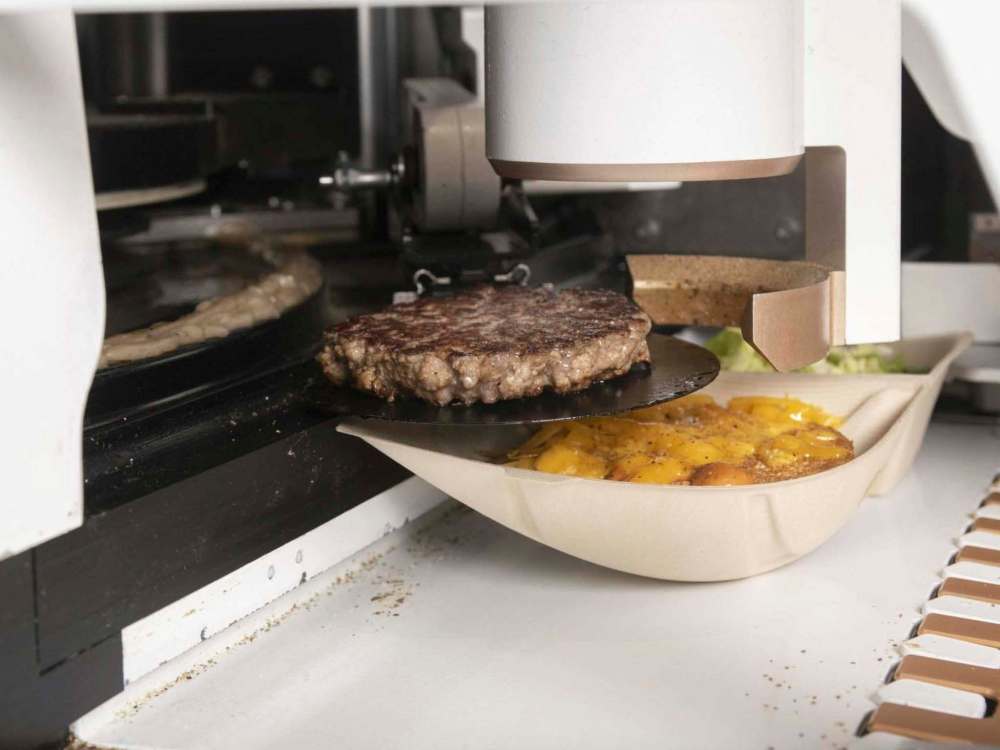
Formerly known as Momentum Machines, Creator was founded by entrepreneur Alex Vardakostas in 2012. The 33-year-old has assembled an Avengers-like super team of engineers, designers and roboticists from Apple, Tesla, NASA and Walt Disney Imagineering R&D. The team also includes alumni from elite restaurants such as Chez Panisse, Momofuku and SingleThread.
Vardakostas’s pitch is simple: machines can cook burgers over a hot griddle and slice tomatoes more efficiently than a human can and don’t have the health hazard of showing up to work the grill with a cold. And then there’s the social media gold mine that a Willy Wonka-esque food machine presents. The 14-foot-long contraption, which the team refers to as a “culinary instrument” rather than a robot, features glass chutes that transport buns, silos that dispense sauces and paddles that gently push the evolving burger along.
“June 27 is a big day,” Vardakostas says. “When I started this process eight years ago, there wasn’t the inevitability that this would happen with food. Now, not only is it inevitable, but it also produces a much higher-quality product.”
I went to the Creator storefront, in San Francisco’s South of Market neighborhood, to sample the four burgers that will be on offer when the place opens, and decide whether Creator burgers deserve to be as ubiquitous as driverless cars.
● ● ●
The 2,200-square-foot Creator space is spare and clean, with white-tiled walls, a poured concrete floor and light ash wood accents. Instead of a counter, the glass-walled machine is front and centre. Within are a series of oversized vertical tubes with stacks of tomatoes, onions, pickles and so on.
Lanes of brioche buns are positioned overhead.
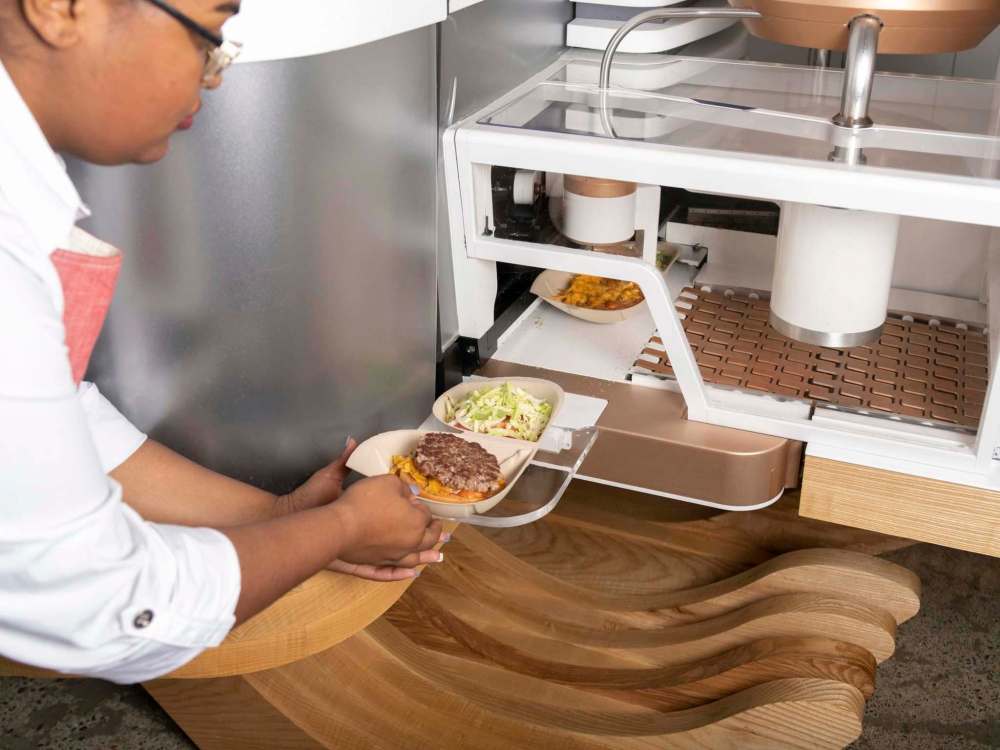
“I consider this to be the most transparent restaurant,” Vardakostas says.
The one part of the burger-making process that customers won’t see is the grinding and cooking of the burger.
“There was a hesitation about seeing meat being ground,” he says.
The machine in action is made for fast-motion video. First, the brioche travels across the chute, pushed by a wooden block (and air pressure). It then shimmies down a chute as it’s sliced, toasted and deposited in a leaf-shaped, custom-made container. Travelling along the copper-coloured conveyor belt, it lands under the sauce spigots — there are around eight on offer, including barbecue, onion jam, shiitake mushroom and ballpark mustard.
Next, are the sweet pickles, tomatoes and onions — sliced to order, they land in slow motion on the bun. Shredded lettuce follows, then cheese — mild or smoked cheddar is grated to enhance the melting potential.
At the end of the line are large tubes of seasoning, including alderwood smoked salt, sprinkled on the griddled four-ounce burger before the patty lands on the cheesed half of the bun.
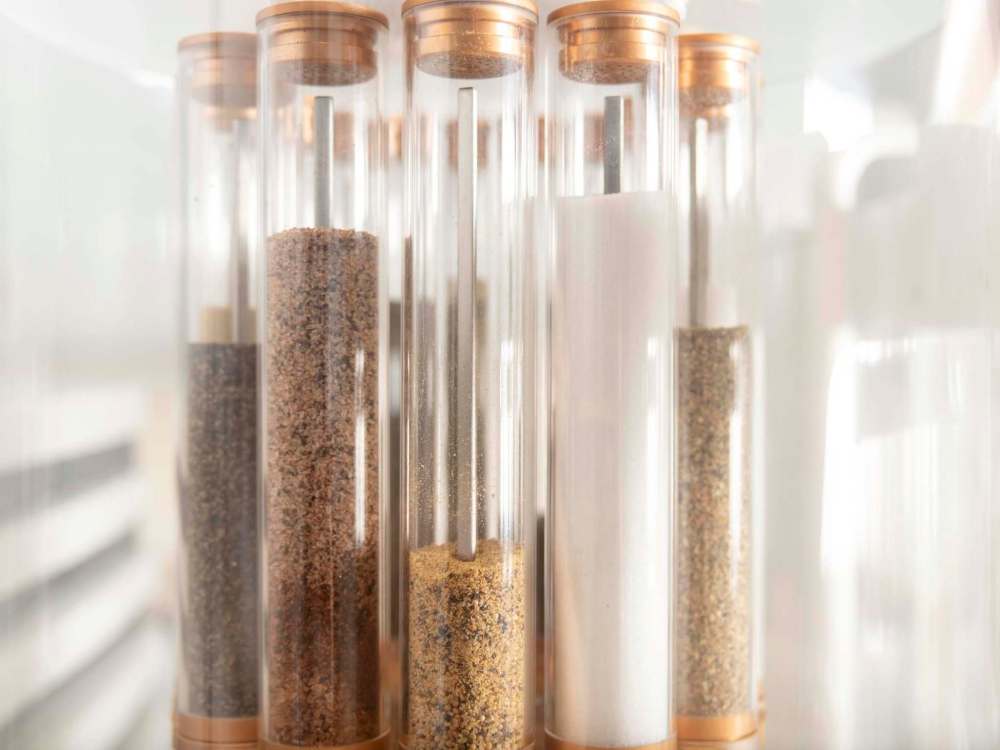
The only workers you’ll see around the machine, apart from the odd employee replacing ingredients, are “concierges” at the front of the contraption to take orders and payment, and a few at the end to serve the burgers.
Creator will be open for lunch on Wednesdays and Thursdays, and a limited number of diners can order via an online ticket system through August. In September, Creator will open to the public.
● ● ●
The amount of money being poured into the gourmet burger market is vast. Vardakostas won’t share numbers — a 2017 Business Insider story reported US$18 million in financing — but he confirms Google Ventures, Khosla Ventures and Root Ventures are investors.
Vardakostas comes from a burger background. His family owns the Southern California-based A’s Burgers, and two of his aunts have burger chains.
“When you make 400 of the same burger every day, you can’t help but think, ‘How would I make this experience better?’” Vardakostas says.
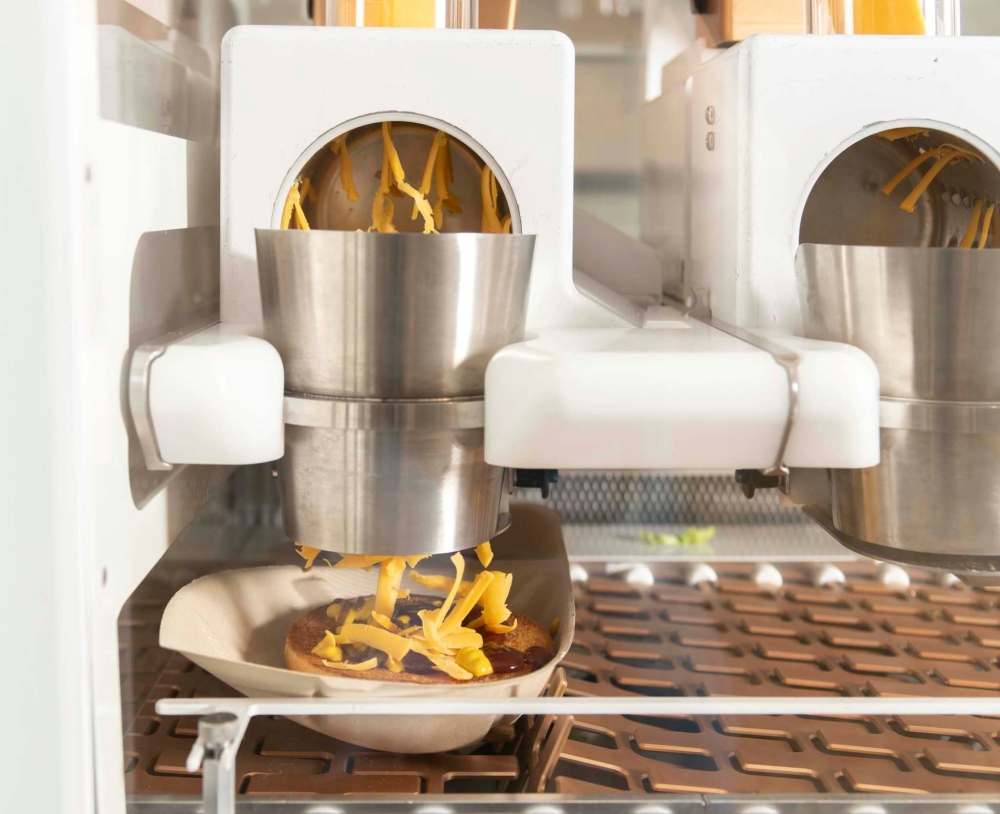
Like Steve Jobs, Vardakostas created the first prototype in his parents’ garage around 2010. When he went up to Menlo Park, Calif., to fine-tune the machine in 2012, he met Steve Frehn, a mechanical engineer with experience at NASA and Tesla Inc., who came on board.
“Before 2015, people wanted to do something sexier, like self-driving cars. It was more socially acceptable to say I was unemployed than to say that I was working on a burger robot,” Vardakostas says. “But now, it’s an easy sell to get people to come on board with the idea of improving food for everyone.”
● ● ●
Creator is located at 680 Folsom St., South of Market. It’s in San Francisco’s top-five priciest neighbourhoods, according to statista.com. Among its neighbours are Microsoft, Salesforce.com, LinkedIn and Yelp.
The company has been there for more than two years, since early 2016, when the project got started, making the space an expensive test kitchen as the team perfected such issues as patty size and customization.
“What you’re watching is a technological feat. Self-driving cars need a lot of mileage before they become reliable. You’re seeing something similar here,” Vardakostas says.
As for other expenses, the food costs are unusually high.
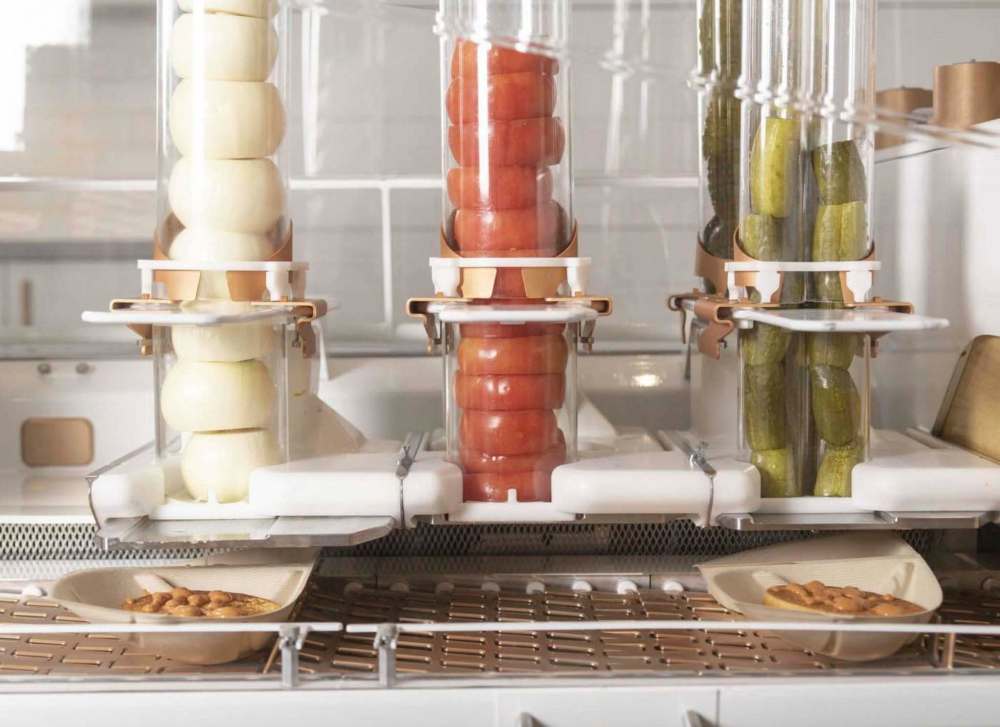
For most restaurants, they are around 30 per cent. Here, they’re at least 40 per cent, according to some estimates. Labour costs are lower, though. There are about 40 people on the team, with about nine employees working during opening hours, Vardakostas estimates, a lower number of staffers than at a burger place.
There’s also the design. Because so much of the work is done by the machine, typical burger production space is freed up for seating.
“It costs about US$1.5 million on average to build a McDonald’s. The machine is way less than that,” Vardakostas says.
Creator has plans to roll it out into other cities as well as venues like airport terminals, train stations, stadiums and universities.
“The machine gives us the architecture freedom to make this kind of experience all over. It doesn’t smell like burgers.”
● ● ●
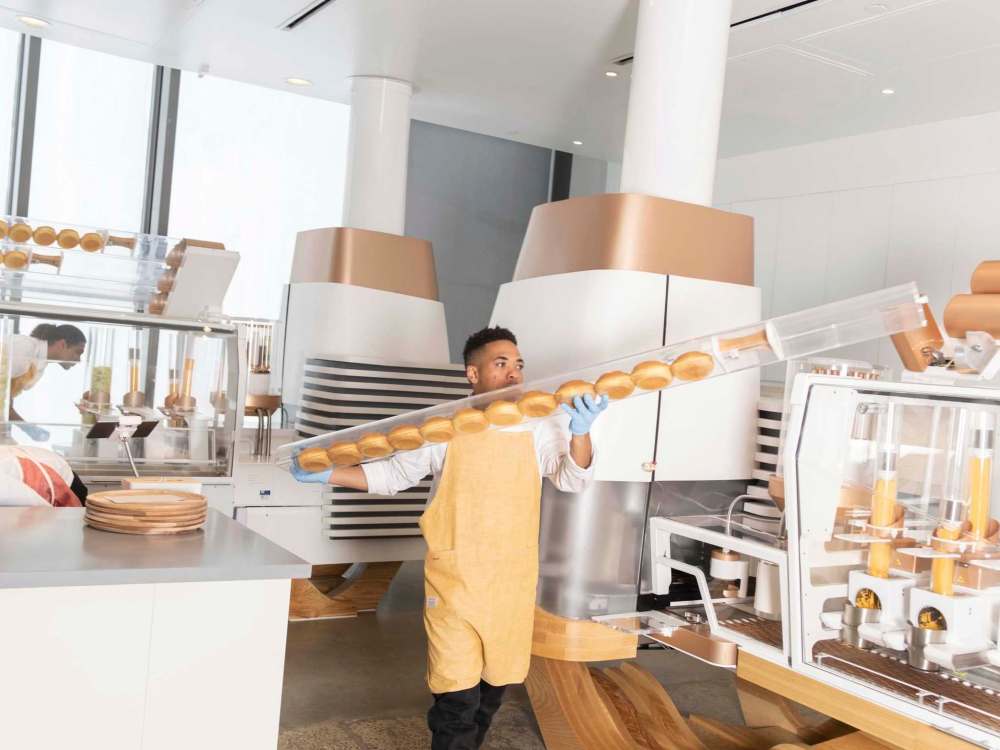
After watching the machine do its thing (multiple times), I tried all four burgers on Creator’s opening menu. The Smoky was my favourite — it boasts the house barbecue sauce and charred onion jam, with chipotle sea salt and melted smoked cheddar on top, giving it enough smoke to live up to its name. The signature Creator vs. the World burger features what the company calls Pacific sauce, its take on Thousand Island, made with Mole sauce and umeboshi plum. The burger tastes like a very good version of a classic Cali burger except one where all the ingredients pop, such as the burst of sweet pickle. I was surprised by how meaty the unremarkable-looking patty tasted, seared and juicy.
One thing that will be missing from the experience starting June 27 is the accompanying app. When that’s introduced a few months from now, it will change Creator’s burger game. The number of burger options will explode as diners customize their burgers.
“Think of it. You can add extra barbecue sauce on the top bun, habanero salt on the bottom of the patty, which has a bigger impact than the top,” Vardakostas says. “It’s where math explodes. I’m excited for people to see what different amounts of even something like seasoning can do to their burgers.”
The flow of burgers will be slow initially. The machines — there are currently two — can produce up to 120 per hour. Later, it’s expected to produce 400 per hour.
How does the competition feel about a robot-made burger? Josh Capon of Bowery Meat Co., whose burger regularly wins competitions, is intrigued.
“There’s a human touch and variables that are involved. We train our guys carefully on how to cook the burger. Do I trust a machine to flip my burger? I’m not sure,” he says.
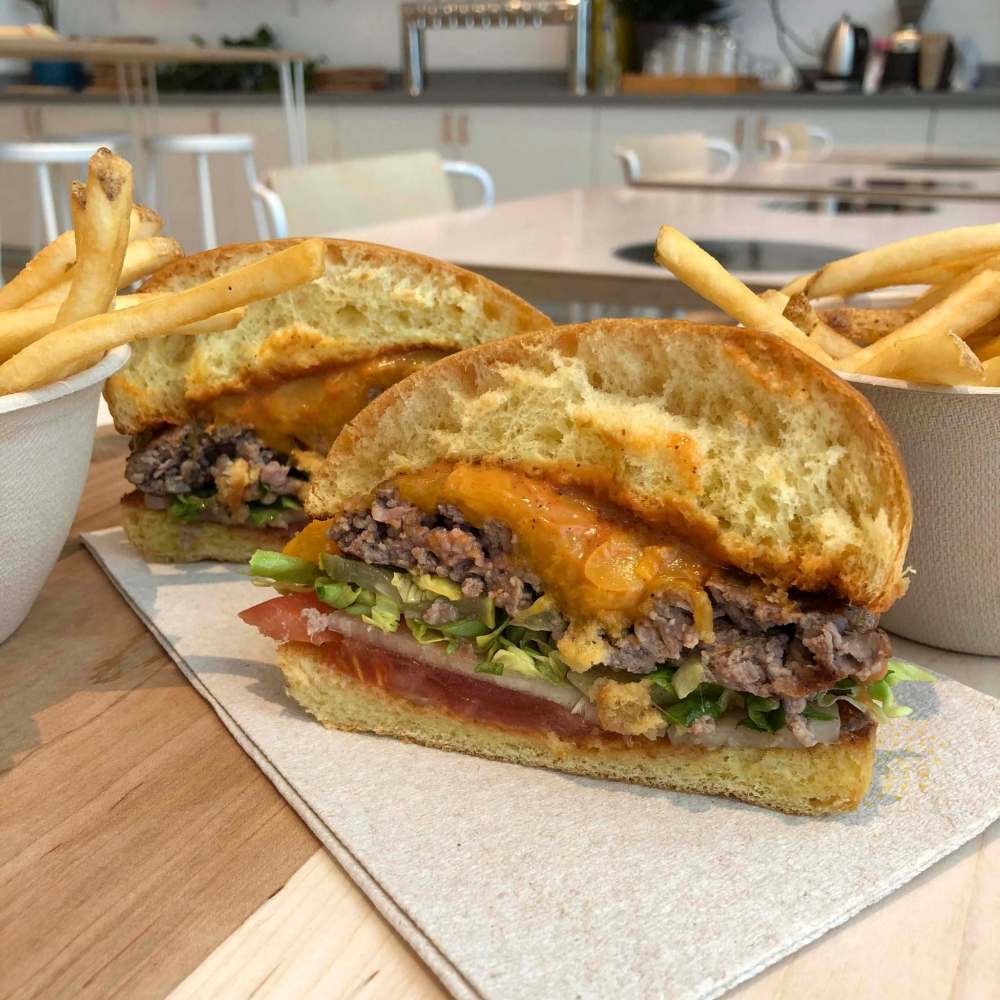
Yet, he notes the economics of today’s restaurant business.
“With the cost of labour, it’s interesting to consider. And if the burger is cooked to order — not to mention ground to order — I’m interested, yeah.”
— Bloomberg News

